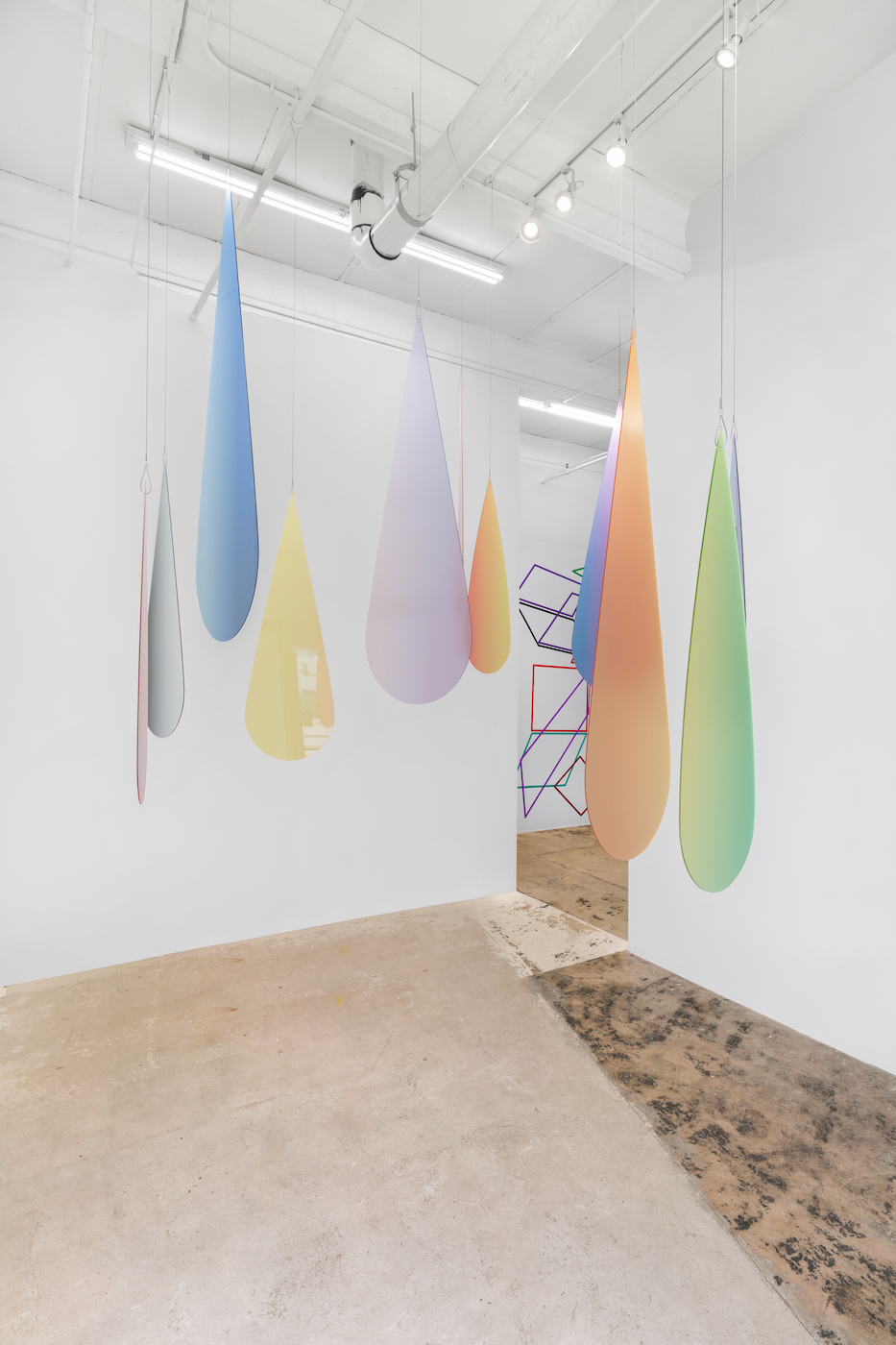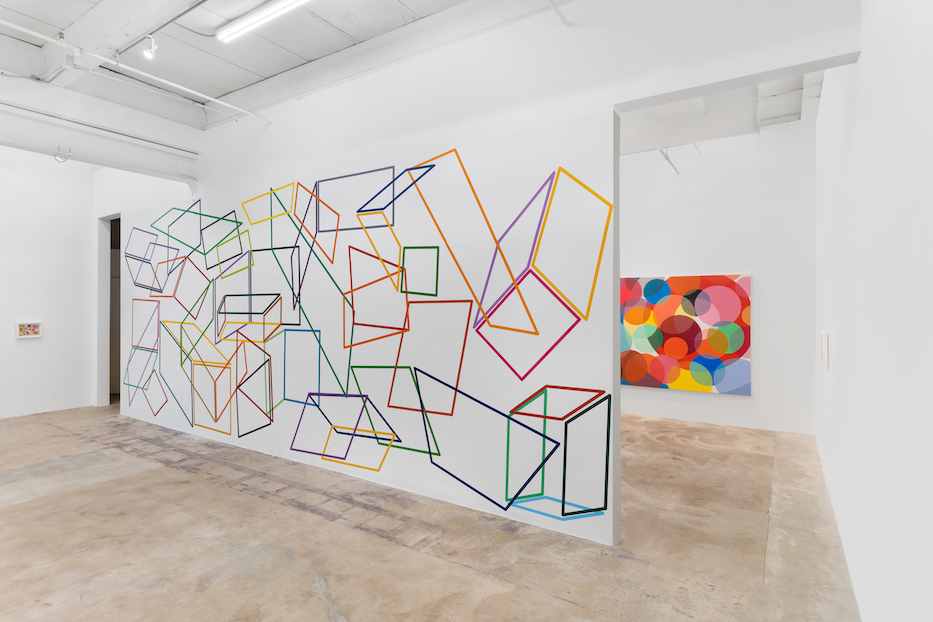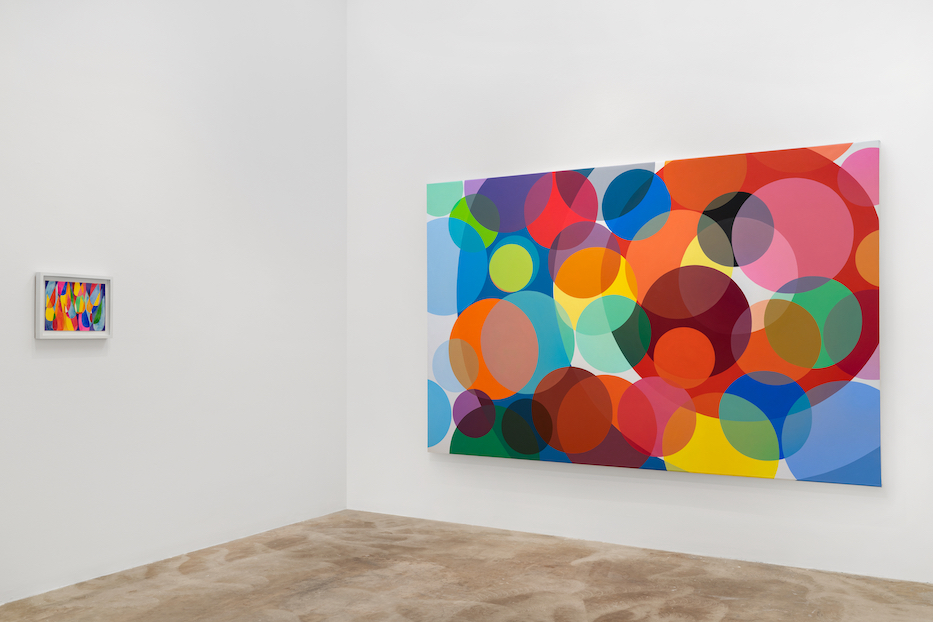GRACIELA HASPER
THE RESONACE OF DREAMS
March 10 — June 10, 2023














Dot Fiftyone is delighted to announce Graciela Hasper “The Resonance of Dreams”, her second show at the gallery. It comprises a selection of new works that include paintings, watercolors, ceramics, and site-specific installations.
Graciela Hasper’s watercolors are in the territory of intuition, where the creative possibilities of the intersection of shapes are explored, and the chromatic invention, with its combinations, is displayed. They are not sketches, although it is certainly possible to relate several of her watercolors to specific pieces of work. Rather, they are studies of invention, where subjectivity holds sway, though it may not prevail over the constructive reasoning that is shown unhesitatingly in her acrylics… Each watercolor offers itself independently to the viewers: they may linger over the transparencies and the impressions left by the brushstrokes or on the sometimes-fuzzy fields of color at the border of the line as a result of water. The objectivation of large-format canvases is the denial of the immediacy of the watercolors in their execution as well as in their observation.
The earliest painting selected for this exhibition is from 2000. It presents a dynamic pattern, different from one in recent pieces, with a white background and small gray and colored oval shapes that encourage the viewer to look in multiple oblique directions. In a painting from the following decade, the orange color field sets up a precise limit so that the sequence, as an act of papyrology, may take place at its center. Her recent paintings emphasize this reflective process within the geometric system (from the modern avant-garde to the contemporary neo-geometric movements); each piece is supposed to display a unique formal relation, always from the paradox of an objective painting, that is both emotional in its perception as well as playful.
The specific dimension of color is set in a well-balanced manner, leaving out any hint of violent gesturing to favor chromatic subtlety at the points of contact between shapes, among which the curved ones prevail. It is the reclaiming of clear and jubilant art that accepts universality without losing the connection to the regional genealogy of expansive painting in space or with the appeal to a viewer’s senses. From then on, it will not abandon the mystical framework or the angst before the absolute, which is one of the sensitive sources of abstraction.
Her projects in public spaces and the specific large-scale pieces complement what was left unfinished of the modern project: to create the necessary conditions for a new vision. When she eliminates the separation between art, design, and everyday life, Hasper is not trying to connect the image to the urban dynamics from the perspective of geometry and color, but rather, she is trying to establish the moment of perceptive isolation in which beauty helps the viewers snap out of their alienation. In this exhibition, she offers a specific impression, originating from her digital work, which recovers in a more elaborate way the explorations of the colored line drawings of the geometric shapes on large white backgrounds she made in 2001, where beauty arose as a social necessity in the midst of social collapse. While working the modes and frames allowing flexibility, Hasper is thinking about the possibility of shape as a space modifier, as an aesthetic of an abstract montage, well executed in the suspended “drops of color” that complement the idea of the viewer’s participation.
Simultaneously with her paintings and installations, Hasper worked in ceramics in recent years. Some of those pieces can be associated with the geometrical and precarious shapes found in her watercolors, isolated in their volumes. Perhaps, the musicality of color in them — a feature of her aesthetic tenet — acquires the resonance of dreams that brings about the return to the origins of civilization.
Roberto Amigo
About the artist:
During a trip to Europe in 1987, Graciela Hasper realized for the first time that she wanted to make art. She returned to Argentina and began her studies with other artists: between 1987 and 1991, she studied with Diana Aisenberg while also pursuing independent studies of philosophy and art history. Hasper never attended art school.
Since the 1990s, Hasper’s painting aesthetic has been clean and direct, marked by sharp orthogonal lines and bright color. In 2000, she completed her first residency in the United States at Apexart in New York City. In 2002, she participated in The Chinati Foundation artist residency in Marfa, Texas. Her work has expanded to a larger scale, even encompassing architectural interventions. For her 2013 project for the Museo de Arte Moderno de Buenos Aires (MAMBA), Nudo de Autopista, Hasper designed a painted mural for 100 columns of intersecting highways in Buenos Aires. The resulting color scheme marked the different flows of street traffic.
In 2016, Hasper designed a large-scale mural for Miami Beach’s Faena Forum, a landmark designed by Rem Koolhaas of OMA. This site-specific wallpaper mural covers a four-story wall in bright color and geometric pattern. The same year, Hasper created Notas de Luz, a three-dimensional light installation in Buenos Aires, consisting of a screen in the ceiling of a 328 feet high public square. The piece changes with the pedestrians passing, playing pre-recorded sequences and the music played in the Usina del Arte.
Hasper’s works have been shown in important selected exhibitions, including Centro Cultural Recoleta, Buenos Aires, Argentina (1990); Es roja, Centro Cultural Rector Ricardo Rojas, Buenos Aires, Argentina (1995); Fondo Nacional de las Artes (FNA), Buenos Aires, Argentina (2002); Intemperie, Fundación Banco Santander, Buenos Aires, Argentina (2019); art-cade*, Marseille, France (2007); Trabajo Reciente, Galeria Oscar Cruz, São Paulo, Brazil (2014); Geografía, Instituto de Cooperación Iberoamericana (ICI), Buenos Aires, Argentina (2001); Pensar en abstracto, Museo de Arte Contemporáneo de Buenos Aires (MACBA), Argentina (2017); Neo Post, 50 Años De Pintura Geometrica En Argentina 1970-2020, Museo de Arte Contemporáneo de Buenos Aires (MACBA), Argentina (2021); Encuentros / Tensiones, Museo de Arte Latinoamericano de Buenos Aires (MALBA), Argentina (2013); Graciela Hasper: and Gramática del Color, Museo de Arte Moderno de Buenos Aires (MAMBA), Argentina (2013); and Latinoamerica al Sur del Sur, Museo de Arte Latinoamericano de Buenos Aires (MALBA), Argentina (2021).
Hasper’s works, are represented in several significant art collections, including Colección Patricia Phelps de Cisneros (CPPC), Caracas, Venezuela and New York City, New York, USA; The Diane and Bruce Halle Collection of Latin American Art, Scottsdale, Arizona, USA; Museo de Arte Contemporáneo de Bahía Blanca (MAC), Argentina; Museo de Arte Contemporáneo de Buenos Aires (MACBA), Argentina; Museo de Arte Contemporáneo de Madrid, Spain; Museo de Arte Latinoamericano de Buenos Aires (MALBA), Argentina; Museo Moderno, Buenos Aires, Argentina; Museo Municipal de Bellas Artes Juan B. Castagnino, Rosario, Argentina; Museo Nacional de Bellas Artes, Buenos Aires, Argentina; De La Cruz Collection, Miami, USA; Telefónica Argentina, Buenos Aires, Argentina; The Museum of Fine Arts, Houston (MFAH); and Philadelphia Museum of Art, Pennsylvania, USA.
In 2023 Graciela Hasper was appointed by Houston Moca on behalf of Bush Intercontinental Airport for the city of Houston, TX by the city’s Civic Art Program and Houston Art Alliance to create a site-specific installation for the new terminal of the Houston International Airport. Hasper is currently working on her new survey book to be published by Karen Marta Editorial Consulting New York.
Click to watch the video and meet Graciela Hasper at her studio



